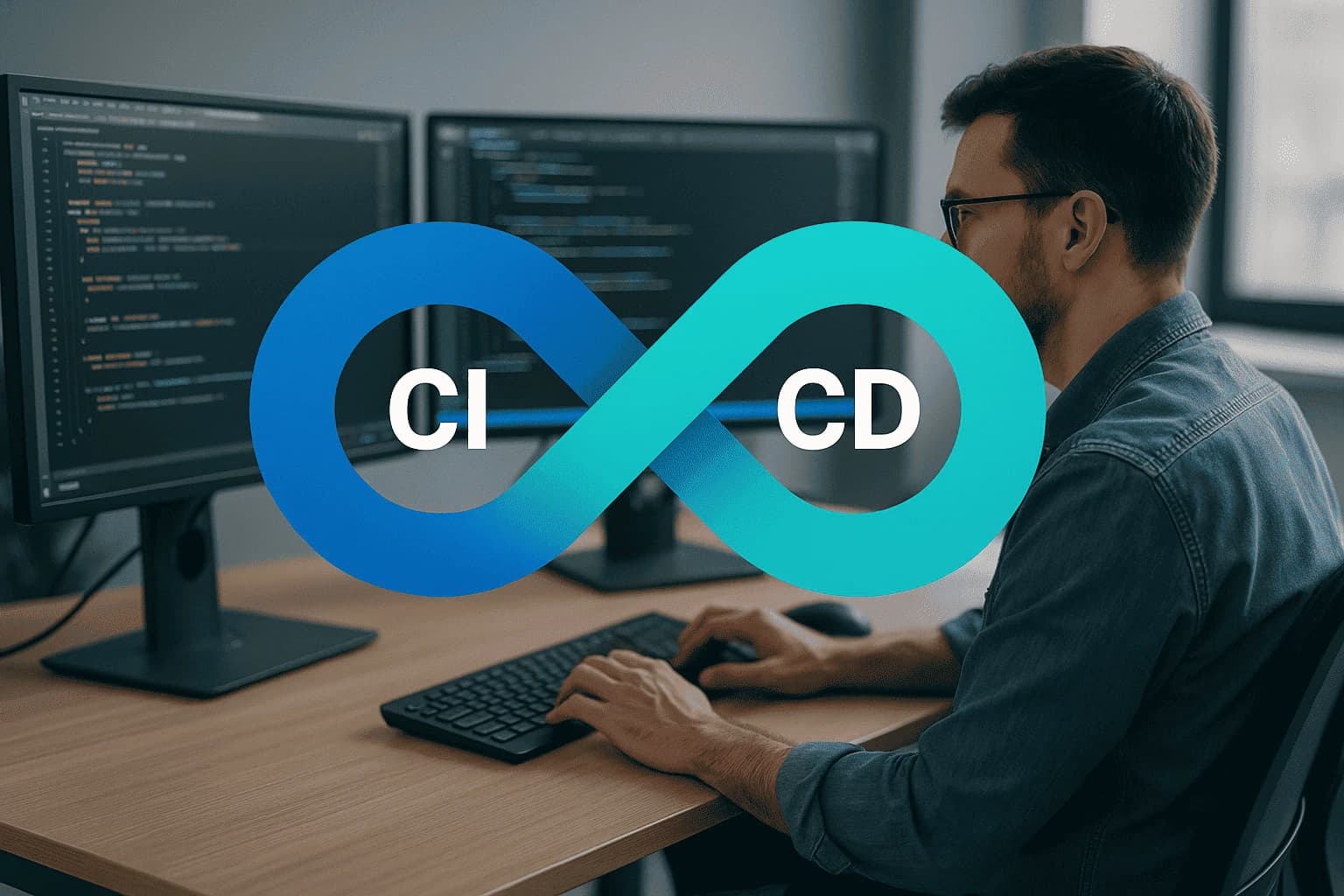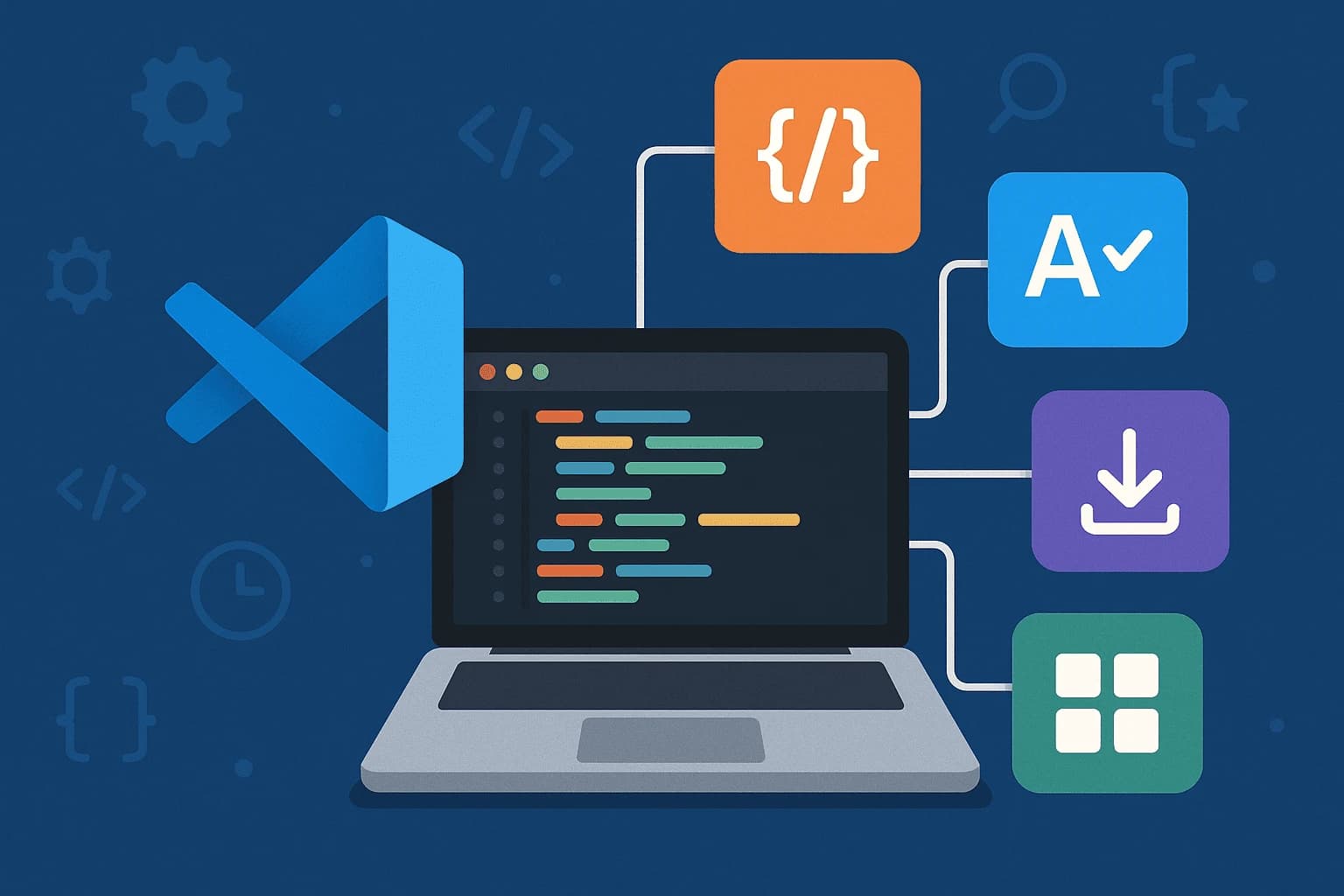
* All product/brand names, logos, and trademarks are property of their respective owners.
In today’s digital-first world, delivering software fast—and securely—is no longer a competitive edge, it’s a survival requirement. That’s where Continuous Integration and Continuous Deployment (CI/CD) come in. CI/CD has become the beating heart of DevOps workflows, automating the build, test, and deployment stages of software development to ensure rapid, reliable releases.
But as we venture deeper into 2025, the world of CI/CD isn’t standing still. It's evolving faster than ever before, fueled by demands for speed, security, and scalability. Businesses are dealing with more complex architectures—microservices, containerized environments, and multi-cloud strategies—and traditional approaches to deployment simply can’t keep up. Enter the next generation of CI/CD tools, enhanced with artificial intelligence, built-in security (DevSecOps), and cloud-native capabilities that redefine what’s possible in software delivery.
This blog explores how CI/CD tools are reshaping DevOps in 2025. From established names like Jenkins and GitHub Actions to cutting-edge platforms like ArgoCD and Harness, we’ll break down the features, trends, and technologies that matter most. Whether you're a DevOps engineer, software architect, or tech decision-maker, this guide will help you stay ahead of the curve.
So let’s dive in and discover how the CI/CD ecosystem is powering the next wave of innovation—enabling teams to ship faster, safer, and smarter than ever before.
As organizations accelerate their DevOps adoption, the demand for robust, scalable, and intelligent CI/CD tools has exploded. In 2025, the focus isn’t just on automation—it’s on smart automation, built-in security, and seamless integration across diverse environments. Let’s explore the top CI/CD tools making waves this year.
Jenkins remains a powerhouse in the CI/CD ecosystem, but it's undergone a major transformation. With Jenkins X and new AI-powered plugins, the tool now supports predictive builds, real-time test optimization, and anomaly detection—empowering teams to prevent deployment failures before they happen.
CircleCI, another top-tier solution, has introduced “Insights”—a feature that leverages machine learning to analyze pipeline performance and recommend improvements. It’s now one of the most developer-friendly platforms, especially for remote-first teams and container-based applications.
GitHub Actions, deeply integrated into the GitHub ecosystem, continues to grow in popularity. In 2025, it supports advanced caching, parallel workflows, and reusable actions, making it perfect for teams seeking simplicity without compromising on power.
While mainstream tools are evolving, specialized platforms are gaining traction:
ArgoCD is leading the GitOps revolution, offering declarative deployment management tailored for Kubernetes. It ensures repeatability, version control, and effortless rollback.
Spinnaker, backed by Netflix, supports multi-cloud continuous delivery and is ideal for complex, enterprise-grade applications.
Harness stands out with its “Smart Automation” capabilities, using AI to verify deployments and automatically roll back failures—making it popular in fintech and regulated industries.
Qodana, developed by JetBrains, adds a layer of code quality scanning directly into your CI/CD pipeline, making it a go-to for teams focused on static analysis and compliance.
When choosing a CI/CD tool in 2025, teams must assess:
| Tool | Strengths | Cloud-native? | AI-Powered? | DevSecOps Ready? |
|---|---|---|---|---|
| Jenkins | Open-source, highly customizable | Partial | Yes | With plugins |
| CircleCI | Fast builds, machine learning optimizations | Yes | Yes | Basic |
| GitHub Actions | Seamless GitHub integration | Yes | Partial | Yes |
| ArgoCD | Kubernetes-first, GitOps-ready | Yes | No | Yes |
| Spinnaker | Enterprise-grade, multi-cloud | Yes | No | Moderate |
| Harness | Smart rollbacks, built-in verification | Yes | Yes | Yes |
| Qodana | Static analysis & quality gates | Partial | Yes | Strong |
From AI-powered diagnostics to secure, declarative deployments, these tools are redefining how modern teams deliver software. In the next section, we’ll explore the emerging trends transforming these pipelines and what that means for DevOps in the years ahead.
CI/CD pipelines in 2025 aren’t just automated—they’re intelligent, secure, and deeply integrated into the modern DevOps lifecycle. New trends are emerging that go beyond continuous delivery, addressing the needs of scalability, compliance, and developer productivity. Here’s what’s shaping the CI/CD landscape now.
AI is no longer a buzzword—it's transforming how CI/CD pipelines operate. Platforms like Harness and CircleCI now use machine learning to anticipate build failures, recommend optimizations, and even auto-heal failing stages. This shift toward predictive CI/CD enables teams to reduce downtime and ship with confidence.
In larger systems, AI helps prioritize test cases based on historical failures, usage patterns, and impact analysis. This not only speeds up release cycles but also enhances test accuracy and resource utilization.
Security is no longer an afterthought in the DevOps pipeline. Enter DevSecOps—the practice of embedding security into every stage of the CI/CD process.
In 2025, tools like Qodana and SonarQube are being integrated early in pipelines for real-time code analysis, vulnerability scanning, and compliance validation. Policies like “fail on vulnerability” or “block deployments with license violations” are enforced by default.
Moreover, major cloud platforms like AWS and Azure offer native integrations for secrets management, runtime scanning, and security posture assessment. This trend ensures that your pipeline not only delivers fast—but also delivers safe.
The rise of GitOps has been one of the most defining trends in CI/CD. By managing infrastructure and application state declaratively through Git repositories, tools like ArgoCD allow teams to audit, roll back, and synchronize changes with unprecedented ease.
Kubernetes-native CI/CD is also surging. Tools are now designed to deploy directly into containerized environments, using Helm charts, YAML manifests, and operators. This reduces complexity, enhances observability, and enables smoother scaling.
For global teams operating across multiple clouds, hybrid and multi-cloud pipelines are the norm. Solutions like Spinnaker and GitLab CI offer integrated deployment strategies that span AWS, Azure, GCP, and on-premise clusters—ensuring delivery consistency and operational flexibility.
From AI to GitOps to DevSecOps, today’s CI/CD workflows are smarter, faster, and more secure. But with so many tools and trends, how do you choose the right stack for your team? That’s what we’ll tackle next.
With the vast array of CI/CD tools available in 2025, choosing the right stack can feel overwhelming. But it doesn’t have to be. The best CI/CD solution is the one that aligns with your team’s size, goals, infrastructure, and development culture. Here’s a framework to help guide your decision.
Let’s start by identifying the right fit based on your company size and project type:
Startups & Small Teams:
Tools like GitHub Actions or CircleCI are ideal for lean teams who want fast setup, integrated environments, and minimal configuration. They offer free tiers, GitHub integration, and great documentation.
Midsize Companies & SaaS Teams:
Consider GitLab CI/CD or Harness for more control, built-in security, and flexible deployment targets. Harness’s AI verification and GitLab’s end-to-end DevSecOps support are big wins for growing teams.
Large Enterprises & Regulated Industries:
Platforms like Jenkins (customized with plugins), Spinnaker, or Azure DevOps offer enterprise-grade control, compliance, and governance. For those running Kubernetes or hybrid environments, ArgoCD shines with GitOps capabilities.
Pipeline Complexity:
If your team has a complex build pipeline (microservices, canary deployments, environment promotion), look for tools with strong orchestration features like Spinnaker or Jenkins X.
Team Skill Set:
Choose tools your team can maintain. Open-source tools like Jenkins require more setup and scripting, while managed services like GitHub Actions or Harness simplify operations.
Cloud & Tech Stack Alignment:
If you're heavily invested in Kubernetes, pick tools like ArgoCD or Flux. For multi-cloud deployments, GitLab CI/CD and Spinnaker offer native support across AWS, Azure, and GCP.
A fintech startup recently adopted Qodana + GitHub Actions to enforce code quality during pull requests, reducing production bugs by 35%.
A healthcare company transitioned from Jenkins to GitLab CI/CD + ArgoCD, enabling faster, secure releases across multiple compliance zones.
An e-commerce firm scaled globally using Spinnaker, integrating their pipeline with AWS, GCP, and Alibaba Cloud—achieving seamless multi-region deployments.
Selecting a CI/CD stack is not just a tech decision—it’s a strategic one. The right tools empower your developers, reduce risk, and accelerate innovation. Next, we’ll wrap up with a powerful conclusion and call to action.
As we navigate the dynamic landscape of 2025, one thing is crystal clear: CI/CD is no longer optional—it’s essential. From startups shipping MVPs weekly to global enterprises deploying to millions of users, continuous integration and deployment have become the engine that powers modern software development.
We’ve explored how tools like Jenkins, CircleCI, GitHub Actions, and Harness are evolving with AI-driven insights, how GitOps and Kubernetes are reshaping workflows, and why DevSecOps is now embedded in every successful pipeline. It’s an exciting time, where automation, intelligence, and security converge to enable faster, safer, and smarter software delivery.
Choosing the right CI/CD stack is more than a technical decision—it’s about empowering your team to move with confidence, adapt quickly, and innovate without fear. Whether you're building your first pipeline or scaling across cloud regions, 2025 offers an ecosystem rich with powerful tools tailored to every stage of growth.
Now is the time to audit your DevOps workflows.
Test new tools. Integrate security early. Automate with purpose. And always aim for continuous improvement—not just in code, but in the culture and processes that shape it.
Ready to elevate your DevOps game?
Explore these tools, experiment with your stack, and join the CI/CD evolution that’s reshaping software development worldwide.

5 December 2025
19 November 2025
No comments yet. Be the first to comment!